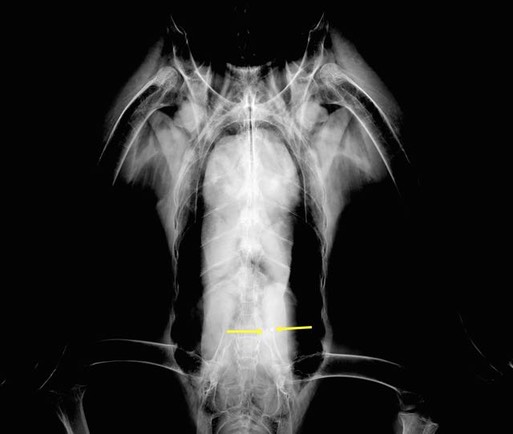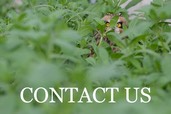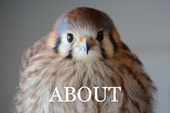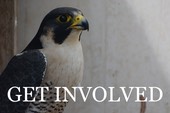What A Way To Start The New Year
The first two raptors of 2018 were gunshot hawks, neither could be saved. Raptor number three was a Bald Eagle with a record high lead level.
Red-tailed Hawk 18-003
A juvenile Red-tailed Hawk was found in Columbia Park, Kennewick, WA, unable to fly. A radiograph showed that she had been shot. Her shoulder was too badly damaged to be repaired. To make matters even worse, she had a toxic level of lead in her blood, 21 micrograms/deciliter. In addition to being shot, she had eaten another animal that had also been shot.
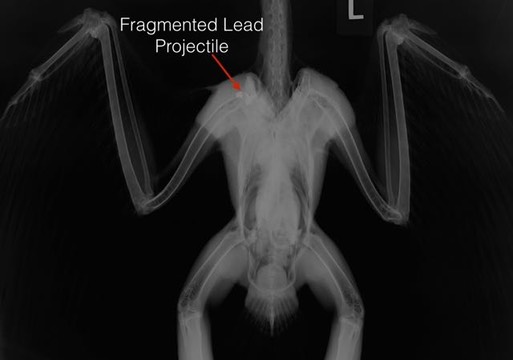
Sharp-shinned Hawk 18-004
An injured Sharp-shinned Hawk was found along Finley Road in Kennewick, WA very near where the gunshot Rough-legged Hawk was found the last week of December. A radiograph showed the Sharpie had also been shot. There were multiple fractures in the humerus and ulna.
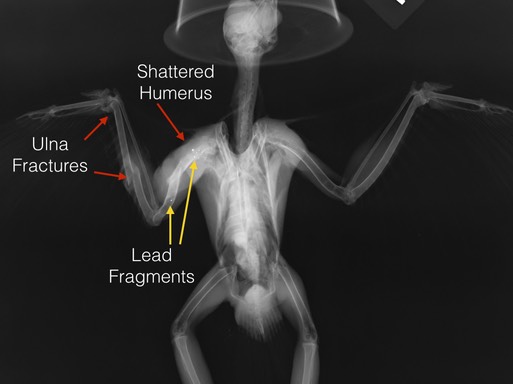
Bald Eagle 18-006
When volunteers Ken and Janie received a call about an "injured hawk or eagle laying in our backyard,” they assumed they would arrive to find a hawk (lots of folks mistake large hawks for eagles). Not so! The bird was a female, juvenile Bald Eagle. She was definitely not going to fit in the cardboard cat carrier they had brought along for transport. They quickly came up with Plan B, and transported the eagle to Umatilla where they met Bob who brought her on to Pendleton.
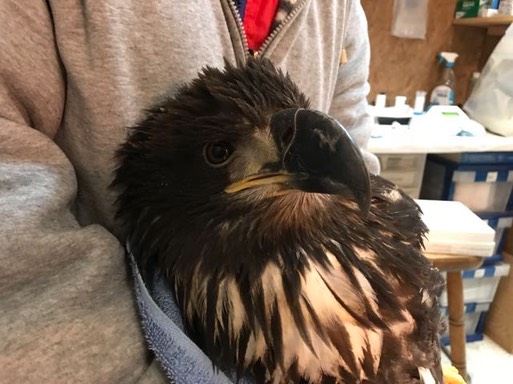
A lead test is always one of the first orders of business when an eagle is admitted, especially when there are no obvious signs of injury. The LeadCare II machine we use gives a High reading if the lead level is above 66 micrograms/deciliter. We had to dilute the eagle's blood twice in order to get the lead level low enough to register on the machine, and then do some math to get a final reading. It was 813 micrograms/deciliter, the highest lead level we have ever measured. The eagle is very dehydrated, but not underweight. I’m hoping that means the lead poisoning is acute (very recent), and will quickly respond to chelation.
A radiograph shows what appear to be two pieces of lead in the eagle’s ventriculus (gizzard). We are attempting to rehydrate her in hopes that she will cast a pellet and expel the lead. One of the side-effects of lead toxicity is to cause the gut to shut down. We are definitely fighting an up-hill battle.
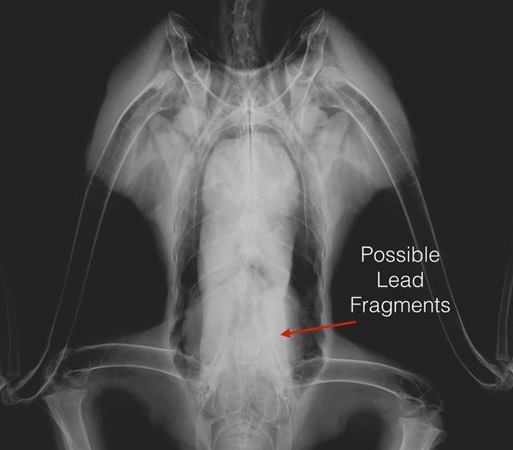
Below is a radiograph enhanced by Dr. Jeff Cooney to better show the lead fragments.
